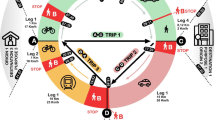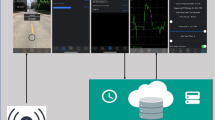Abstract
This paper presents a streamlined machine learning-assisted integrated approach for smart surveys and data collection with applications to multiple domains such as transportation, aviation, healthcare, and education. We exploit several machine learning methods to enhance the survey’s effectiveness and increase the trustworthiness of the collected data in real time. The methodology is demonstrated in a case study involving the daytime seat belt surveys mandated by the U.S. National Highway Traffic Safety Administration (NHTSA). To implement and test the approach, we also built an integrated tool. This cloud-based software tool is designed to aid in intelligent data collection, quality control, survey management, data analysis, insight extraction, and a feedback structure. This tool automates and standardizes the complete process of transportation-related data collection, quality control, and better decision-making. The framework presented is adaptable, underscoring its potential for widespread application and utility in other domains as well.











Similar content being viewed by others
References
Kahane CJ (2000) Fatality reduction by safety belts for front-seat occupants of cars and light trucks: updated and expanded estimates based on 1986-99 fars data. Technical report
Agarwal S, Sancheti A, Khaddar R, Kachroo P (2013) Geospatial framework for integration of transportation data using voronoi diagrams. In: Transportation Research Board 92nd Annual Meeting
Vasudevan V, Kachroo P, Bandaru N (2015) Nighttime seatbelt usage data collection: when and how long? IATSS Res 38(2):149–156
Krishen AS, Kachroo P, Agarwal S, Sastry SS, Wilson M (2015) Safety culture from an interdisciplinary perspective: conceptualizing a hierarchical feedback-based transportation framework. Transp J 54(4):516–534
Vivoda JM, Eby DW (2006) Using personal digital assistants (pdas) for the collection of safety belt use data in the field. Behav Res Methods 38(1):158–164
Kachroo P, Lakhanpal P, Wilson M (2011) An optimal data entry system using pdas for seat-belt usage studies. In: Transportation research board 90th annual meeting
Lakhanpal P (2011) Traffic safety: modeling, analysis and visualization
Sancheti A, Lakhanpal P, Contreras S, Kachroo P, Wilson M (2012) Comparative study of various data collection software used for seat-belt observational surveys. Technical report
Nambisan SS, Vasudevan V (2007) Is seat belt usage by front seat passengers related to seat belt usage by their drivers? J Saf Res 38(5):545–555
De Maesschalck R, Jouan-Rimbaud D, Massart DL (2000) The mahalanobis distance. Chemom Intell Lab Syst 50(1):1–18
Filzmoser P, Maronna R, Werner M (2008) Outlier identification in high dimensions. Comput Stat Data Anal 52(3):1694–1711
Locantore N, Marron J, Simpson D, Tripoli N, Zhang J, Cohen K, Boente G, Fraiman R, Brumback B, Croux C (1999) Robust principal component analysis for functional data. Test 8(1):1–73
Agarwal S, Kachroo P, Regentova E (2016) A hybrid model using logistic regression and wavelet transformation to detect traffic incidents. IATSS Res 40(1):56–63
Author information
Authors and Affiliations
Corresponding author
Ethics declarations
Conflict of interest
On behalf of all authors, the corresponding author states that there is no conflict of interest.
Additional information
Publisher's Note
Springer Nature remains neutral with regard to jurisdictional claims in published maps and institutional affiliations.
Rights and permissions
Springer Nature or its licensor (e.g. a society or other partner) holds exclusive rights to this article under a publishing agreement with the author(s) or other rightsholder(s); author self-archiving of the accepted manuscript version of this article is solely governed by the terms of such publishing agreement and applicable law.
About this article
Cite this article
Agarwal, S., Gupta, S., Kachroo, P. et al. A Machine Learning Based Approach for Smart and Automated Data Collection: Applications in Transportation. Transp. in Dev. Econ. 10, 15 (2024). https://doi.org/10.1007/s40890-024-00199-w
Received:
Accepted:
Published:
DOI: https://doi.org/10.1007/s40890-024-00199-w




